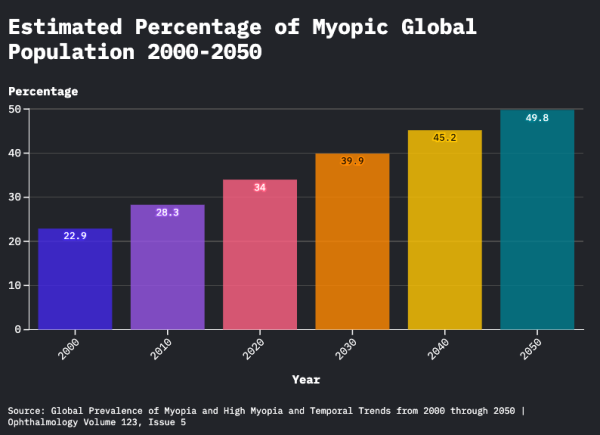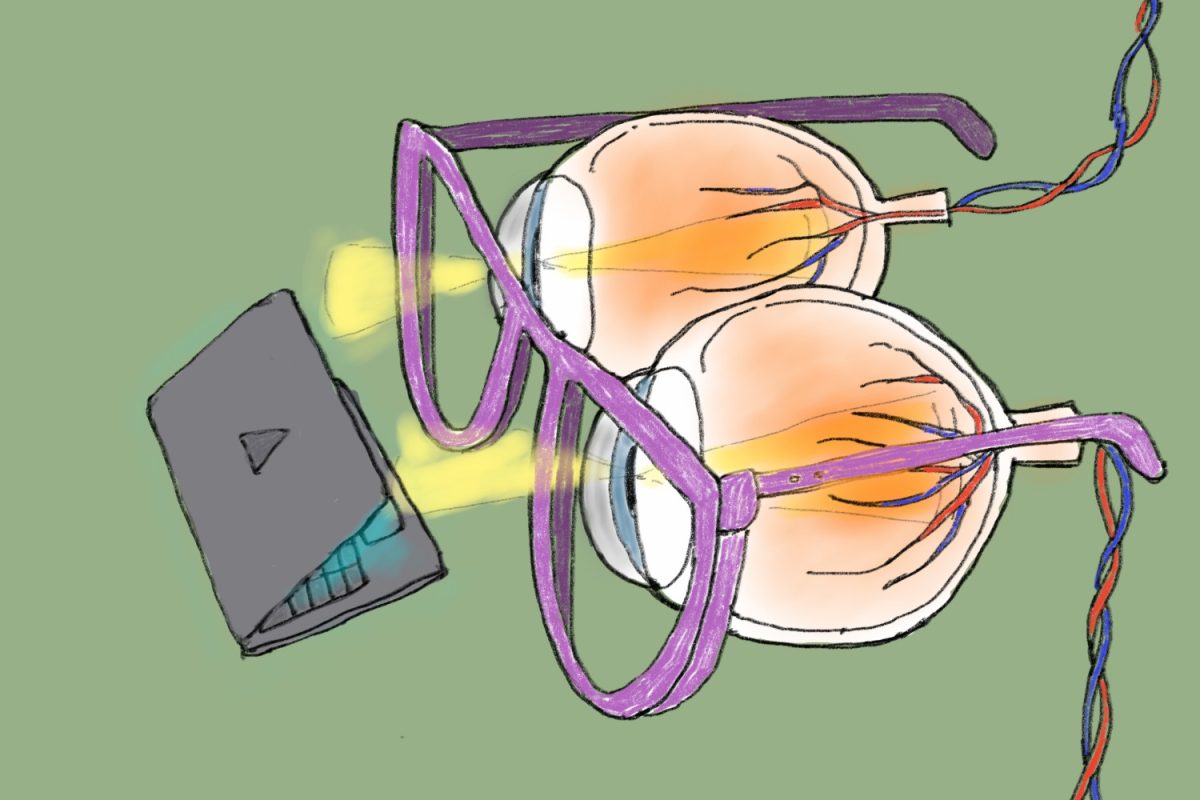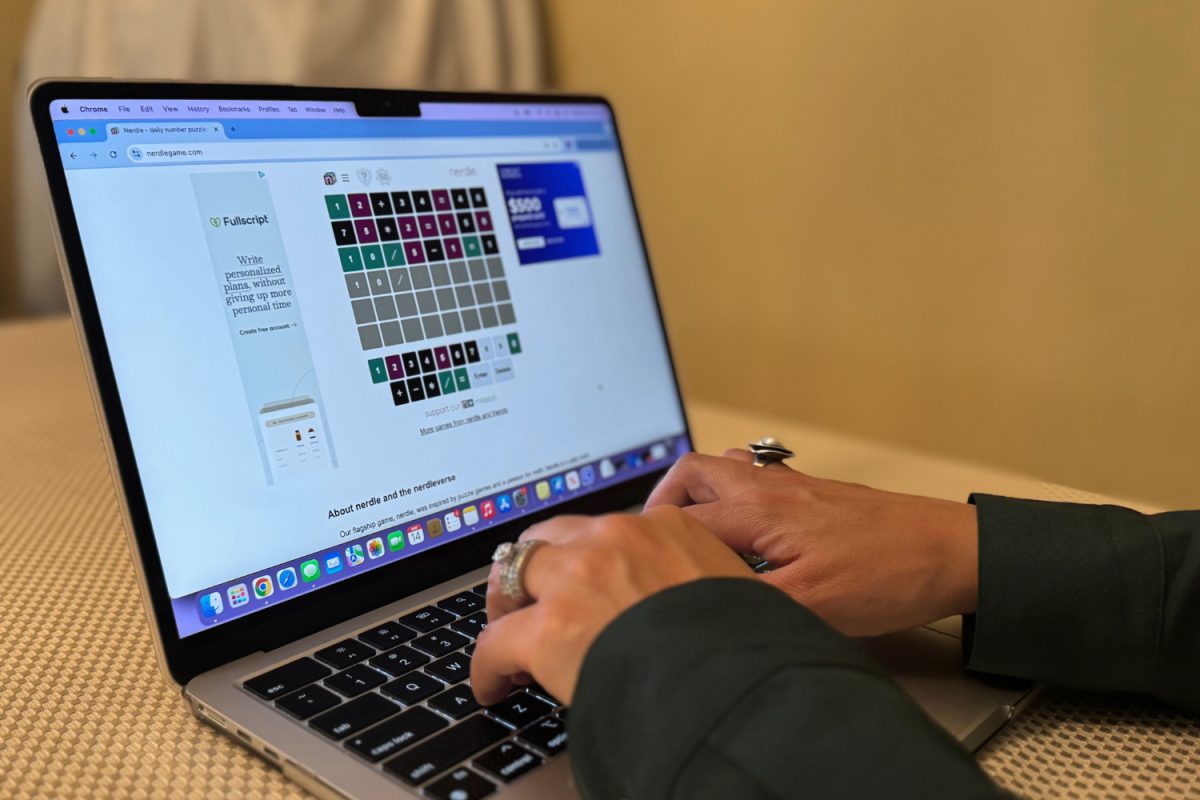Experts estimate that by 2050, half of the world will be nearsighted–as teenagers’ lifestyles become increasingly digital, they indirectly put themselves at higher risk for being part of that half.
Devices offer a variety of convenient entertainment, such as streaming services, social media apps, e-books, and messaging platforms, which can all be done with just one device, making screens a more appealing option than playing outside.
“Being online connects you with your friends without worrying about conflicting schedules and parent availability,” said Carlmont sophomore Dakota Chang.
As digital media has integrated more into people’s lives, students’ lifestyles are reflective of the change. According to Common Sense Media, between 2019 and 2021, teen media usage rose from seven hours and 22 minutes to eight hours and 39 minutes.
The increased time spent in front of screens is linked to the upward trend in nearsightedness.
Nearsightedness, or myopia, is an eye condition where distant objects appear blurry due to the eyeball having grown too long or the cornea being too curved. A recent report from the National Academies of Science, Engineering, and Medicine (NASEM) pointed out research suggesting a 25% rise in myopia over the past 40 years.
Genes alone don’t explain the accelerated rate of myopia over several decades. Instead, researchers identified reduced time outdoors, increased screen time, and near work, such as reading, to be the main causes of increasing myopia around the world.
One clear protective measure is more exposure to sunlight. Although researchers don’t know why, data shows exposure to sunlight reduces the risk of developing myopia.
A 2013 study published in Ophthalmology found that after one year of starting an outdoor recess program at one school and not at the other, the new onset myopia rate at the first school was 8.4%, while the second school had a 17.7% rate.
Dr. Ida Chung is an associate professor and associate dean of academic affairs at Western University of Health Sciences, College of Optometry, and a past president of the California Optometric Association.
“Experts are calling myopia an ‘evolving epidemic’ due to its rising prevalence and severity, especially among children. While screen use itself doesn’t directly cause myopia, the extended time spent focusing on close objects, like screens, may increase the risk of myopia, especially in young people,” Chung said.
For some, wearing glasses because of myopia is not a major hindrance.
“I’ve been wearing my glasses for nearsightedness for so long it’s just a part of my ‘brand’ or identity,” said Carlmont junior Teah Sarmiento. “I’m more annoyed by people’s assumptions. A lot of people assume glasses to have a nerdy stereotype and it’s really unrealistic when movie characters suddenly just remove their glasses.”

However, the increased rates of myopia present implications for the workforce and healthcare.
“In the workplace, more employees might need corrective lenses, and the increased demand for vision care could place a strain on healthcare systems. More severe cases of myopia can lead to greater risks for eye health problems later in life, like retinal detachment or glaucoma, which require more specialized care,” Chung said.“Eye health is critical to children’s learning and overall development.”
Fortunately, with care and early intervention, myopia is treatable and manageable.
Optometric associations are raising awareness for the “evolving epidemic” of myopia among adolescents through educational campaigns regarding outdoor activity, screen habits, and eye exams.
High schoolers can protect their sight with healthy screen habits.
“A balanced schedule that includes both screen-based homework and time outside is key. Students can protect their eyesight by following the 20-20-20 rule. Every 20 minutes, take a 20-second break and look at something 20 feet away. This helps reduce eye strain,” Chung said.











